Israel-Hamas War - What happened on day 69?
Hamas terrorists arrested across Europe for terror plots against Jews • Gaza war will take 'months,' Israel tells US
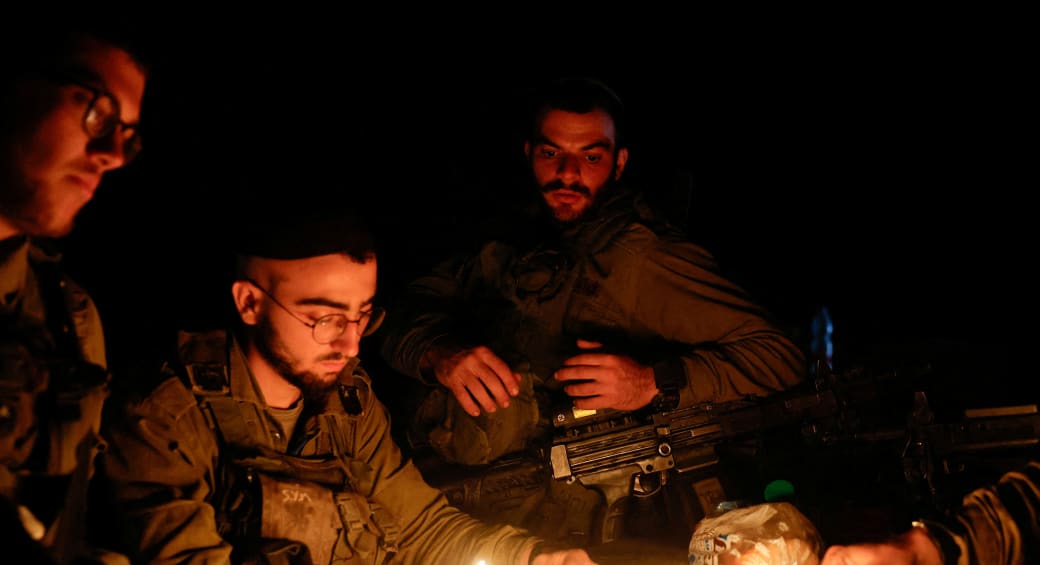

Eight IDF soldiers wounded in southern Gaza battles, Israel says
Also, on Thursday, the IDF made slow but steady progress in both northern and southern Gaza.
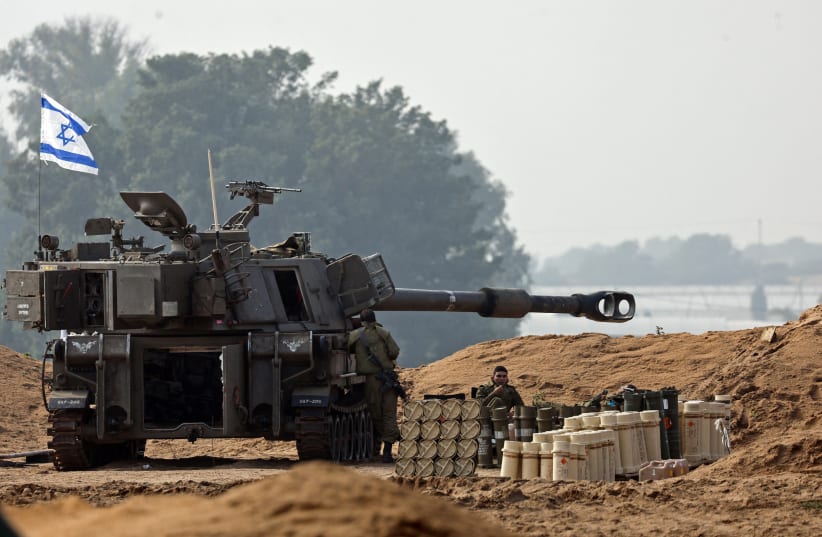
Four soldiers from the 603rd Engineering Battalion, Combat Engineering Corps, as well as an additional officer from Golani's 12th Battalion, were seriously injured in battle in the southern Gaza Strip, according to a report by the IDF.
Another three were injured in a separate battle in the southern Gaza Strip.
All were evacuated for immediate medical treatment, with their respective families informed.
IDF's 12th Battalion commander hurt in Gaza fighting
One of the injured was the lieutenant colonel and commander of the 12th Battalion, who had already replaced the previously injured commander.
This came a day after 10 IDF soldiers were killed and six were wounded, marking a series of difficult days in terms of IDF soldier casualties.
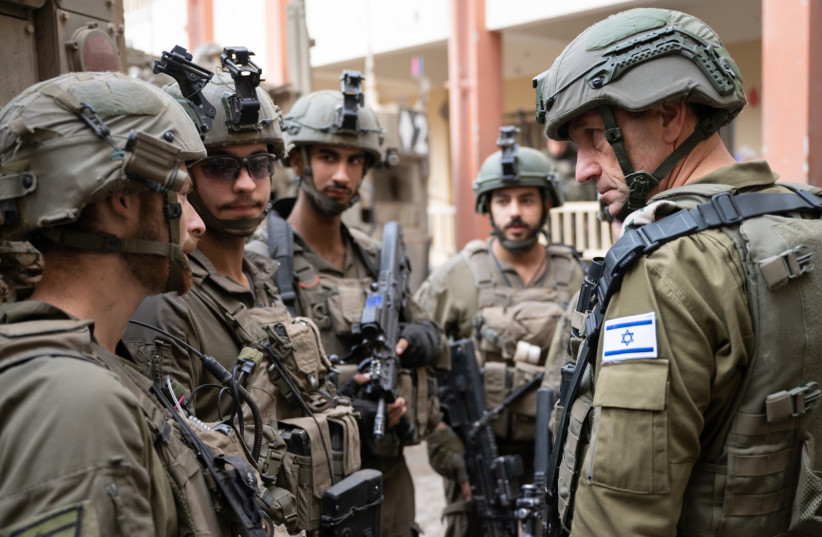
Despite those benchmarks, only 12 rocket sirens sounded on Thursday, with no hits, and many of the rockets were in the North, marking a low for rockets from Hamas in the recent time period since the late November temporary ceasefire.
There were at least three rounds of exchanges of fire between the IDF and Hezbollah in the North, with the Lebanese terror group attacking with rockets and anti-tank missiles and the IDF striking back with air strikes and artillery.
However, there were fewer public statements about escalation from the sides as the week wore on.
Defense Minister Yoav Gallant on Thursday told US National Security Adviser Jake Sullivan that it will take more than a few more months to finish off the Gaza War with Hamas.
Although this would seem to pit Israel in serious tension with the US timeframe for finishing the war in the coming weeks, the Jerusalem Post has clarified that Gallant was referring to the expected counter-insurgency stage of fighting Hamas.
In other words, Gallant and other defense officials would still stand by the end of January as an expected endpoint for the main invasion will the full volume of multiple IDF divisions involved.
Rather, even after the main invasion is considered concluded and IDF forces in Gaza are reduced to a number which can be maintained over a longer period, it has been expected that the IDF will need to fight smaller battles against insurgents for three to nine months.
The defense minister explained that Hamas had spent years creating its terror forces and infrastructure and that taking all of this vast network apart, would require much longer than the initial full invasion stage.
Gallant thanked the US "for its unqualified support."
Sullivan is visiting Israel at a critical point in the conflict with the Biden administration seeking to decide how much longer it will go on protecting Israel from global pressure for an immediate ceasefire. In addition, the two governments have engaged in a series of unusually public jabs at each other about if and to what extent the Palestinian Authority will be involved in running Gaza once Israel withdraws.
In addition, the defense minister said he discussed with Sullivan the question of how to neutralize the threat posed to Israel by Hezbollah in the North.
Along with that issue, Gallant explained how important it is to create new security realities which will allow Israel's tens of thousands of evacuees from the North to return to their homes.
The US has significantly pressured Israel not to engage in a broader fight with Hezbollah and Jerusalem has hoped that Washington will repay some of its restraint by leaning hard on the terror group to keep its forces farther away from the northern border than it has since the 2006 Second Lebanon War.
After that war, UN Security Council Resolution 1701 mandated that Hebzollah stay out of southern Lebanon, but shortly after, the group systematically violated those limits.
In addition, Gallant said Israel welcomes a global approach to holding off maritime threats from the Yemen Houthis, though he said any attack on an actual Israeli ship would lead to a direct Israeli response.
Trying to bring down Gaza’s top leaders, the IDF distributed flyers across Gaza on Thursday, promising huge rewards to anyone who would provide information on the locations of senior Hamas leaders hiding in the Strip.
The flyers state that $400,000 is being offered for information on Hamas leader in Gaza, Yahya Sinwar, and $300,000 for his brother Muhammad Sinwar.
A lower reward, worth $200,000, will be awarded by the IDF to those who provide information on the location of Rafa Salama, the Khan Yunis Brigade commander; for the location of Mohammed Deif, the head of Hamas's military wing, the army will give $100,000.
"Confidentiality is guaranteed," the IDF states in the flyer, and a phone number is provided to call.
IDF makes progress in Gaza's north and south
Also, on Thursday, the IDF made slow but steady progress in both northern and southern Gaza.
IDF troops from the 460th Combat Brigade of the 162nd Division operated in the Kamal Adwan Hospital area with the Shin Bet, with scores of Hamas terrorists being killed or detained.
During the operation, the IDF troops located a building close to the hospital that was being used by Hamas terrorists. An exchange of fire took place, in which a number of Hamas terrorists were killed.
Some 70 terrorists surrendered and left the building with their weapons and were detained and taken for interrogation by the Shin Bet.
This was one of several rounds of large-scale surrenders in recent days, though IDF sources indicate Hamas is still far from completely cracking.
Kamal Adwan Hospital is in the Beit Lahiya area north of Gaza City, near the Israeli border.
In mid-October, various media outlets quoted Hussam Abu Safiya, head of pediatrics at the hospital in northern Gaza, saying it did not evacuate despite calls to do so by Israel. The UN had warned at the time that hospitals would run out of fuel in two days on October 15.
The fuel continued to flow despite the warnings. On November 4, CNN reported that “MedGlobal, a US-based organization that supports local health programs for vulnerable populations across the globe, issued an urgent appeal for fuel to power a generator at Kamal Adwan Hospital in northern Gaza.”
Go to the full article >>Israel 'still far from toppling Hamas’ in Gaza Strip, expert says
While Israel’s political echelon wants to portray Hamas as on the brink of collapse, experts say complex urban warfare will lengthen the war and make victory much less clear.
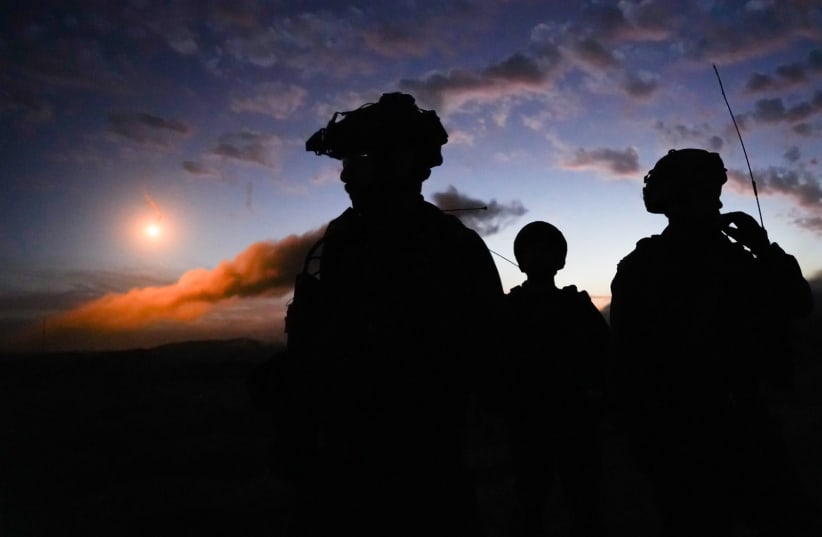
The clock is ticking on Israel’s military operation against Hamas in the Gaza Strip, as it is unclear how much progress the Israel Defense Forces (IDF) has made in eliminating the terrorist organization. The ambitious goal was set out by the Israeli government in the immediate aftermath of Hamas’ surprise offensive on Oct. 7. According to Israeli officials, approximately 1,200 Israelis were killed in the attack and 251 people were abducted by Hamas on that day. So far, 114 of the hostages, some of them foreign nationals, have been released. The rest remain in Gaza, and the Israeli government has promised to secure their release.
According to the Hamas-run Health Ministry in the Gaza Strip, more than 18,000 Palestinians have been killed as a result of Israel’s retaliation on Gaza, with another 50,000 injured.
After over two months, there is increasing international pressure to end the war. Over the weekend, the US vetoed a UN Security Council resolution that called for an immediate cease-fire. While the Biden Administration has maintained that Israel will be the one to determine the end of the war, there have also been American insinuations that Israel’s credit is limited.
The IDF is now in a race against time to achieve its directive—stripping Hamas of its military capabilities and essentially removing it from power.
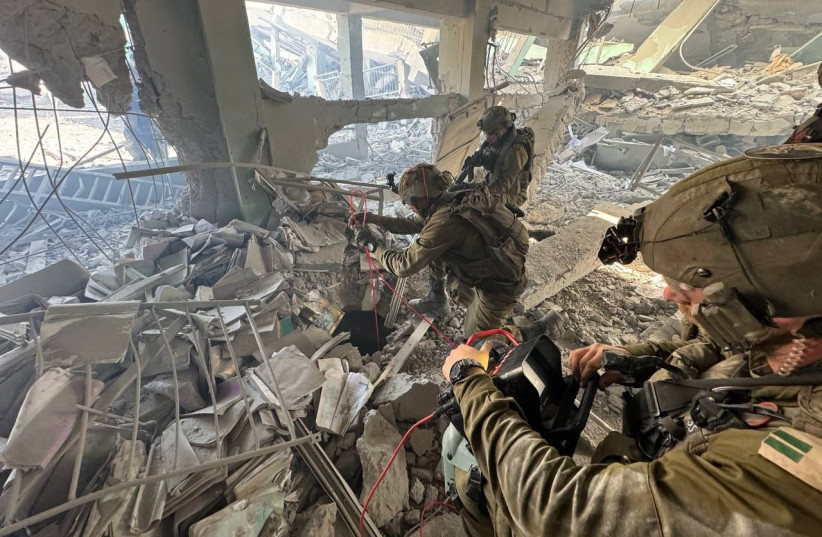
“We have seen extensive damage,” said Dr. Michael Milstein, head of the Palestinian Studies Forum at the Moshe Dayan Center for Middle Eastern and African Studies. “But Israel is still far from toppling Hamas. The majority of its fighters are still alive; it still possesses rockets.”
In addition, Milstein told The Media Line that the bombardment of government symbols, such as the parliament, courthouses, and mosques, is largely of symbolic value.
“Hamas doesn’t need this to keep up its fight,” he added. “For Hamas, resistance is much more important than governance. As long as it has weapons and fighters, it doesn’t care whether it can govern Gaza or hand out humanitarian aid.”
This was proven already on Oct. 7, after many in the Israeli defense establishment thought Hamas was interested in solidifying its sovereignty over the Gaza Strip and would not risk an offensive against Israel that would endanger its rule.
While Hamas’ abilities are not comparable to the large and highly sophisticated IDF, the terrorist organization’s progress has been measured.
Battle rages on
On Tuesday, battles continued to rage in the Gaza Strip.
The territory is a densely populated enclave around 26 miles (41 kilometers) long and between 3 and 8 miles wide. According to the UN, 1.93 million Gaza residents have been displaced as a result of the fighting, approximately 85% of its little over 2 million population. Israeli towns, villages and kibbutzim surround the Gaza Strip’s northern and eastern borders—which total around 36 miles in length— in what is often referred to by Israelis as the “Gaza Envelope.” The Strip also has an 8-mile-long border with Egypt and 25 miles of Mediterranean coastline.
When the IDF began its ground operation in Gaza, it initially focused on northern Gaza, specifically on the towns of Beit Hanoun and Bureij, each with a few tens of thousands of residents. The military then made progress towards Gaza City, the de-facto capital of the territory, where there is a concentration of Hamas government and military buildings.
In addition to Hamas’ military capabilities above the ground, experts believe the terrorist organization has a wide web of underground tunnels in which its munitions are manufactured and stored. These tunnels are also where many of the hostages are believed to be held and Hamas’ military commanders are running the war. The challenges of urban warfare are multiplied in light of this.
After a temporary cease-fire collapsed on Dec. 1, the IDF also began its ground operation in the south of Gaza. The area is believed to be the hub of Hamas’ military infrastructure. It is also believed to be where most of the Israeli hostages are being held. Israel has also vowed to kill Hamas leader Yahya Sinwar, who is believed to be underground in the same area.
“This will be a very complex operation, which will require much more care and time and will likely cost more lives of Israeli soldiers,” said Professor Danny Orbach, a military historian from the Hebrew University of Jerusalem. “Israel is looking to cause the collapse of the Hamas governing mechanism,” he told The Media Line.
“The IDF method is to use massive airpower, then to encircle targeted areas, followed by increased incursions into territories as the hold over these territories gets stronger over time,” added Orbach, who noted that neither Israel nor Hamas focus their efforts on all areas equally. This creates pockets in which Israel has already gained control and other areas in which Hamas has focused its resistance, making it more difficult for the IDF.
On Monday, Israeli Defense Minister Yoav Gallant said Hamas was near “breaking point” in northern Gaza.
“There is a gap between what is being described by the political level as Hamas being on the verge of collapse, but the countdown to the end of Hamas is premature,” said Milstein. “Even after Sinwar will be assassinated, there will still be resistance.”
Both Gallant and Israeli Prime Minister Benjamin Netanyahu called on Hamas terrorists to “surrender or die.”
In recent days, footage emerged of Palestinians being detained by the Israeli military while wearing only underwear. It is unclear how many of the men were taken for further interrogation and how many were uninvolved civilians who were released. However, according to Orbach, pictures of such a surrender are one of the preliminary signs of Hamas’ collapse.
“Mass surrenders, the lack of ability to execute complex military operations, and chaos amongst the civilian population are all signs of collapse,” Orbach said. “As this progresses, the military operation becomes easier. We are at the beginning of this process.”
Over the weekend, the Israeli secret service released a video of its interrogation of former Hamas Communications Minister Yousef al-Mansi. “Sinwar and his gang have destroyed us,” said the former senior official. “We must get rid of them.”
Al-Mansi also estimated that the majority of Hamas’ military brigades have been eliminated. Hamas has not confirmed how many of its members have been killed by Israel since the beginning of the war. Israel said it has killed thousands of Hamas terrorists.
“When a state begins to collapse, no one wants to stay standing last, eliciting a race of who surrenders or runs away first,” said Orbach. “Al-Mansi would not have sharply criticized Hamas’ leadership publicly if he did not think Israel was to remain an influential actor in Gaza after the war. He wants to portray himself as an alternative to the current leadership. Such an experienced member of the leadership that is beginning to smell defeat is another sign of collapse of the governing mechanism.”
Hamas has continued to fire rockets into Israel throughout the military operation despite massive Israeli airstrikes and the presence of its troops in Gaza. While there has been a significant decrease in the amount of rocket fire, it is unclear how much firepower Hamas has left and whether it is using it selectively because its arsenal has been severely hit or holding on to it for future use.
As the military offensive continues, it is clear there is much headway to be made for Israel to reach its goal. While Hamas has controlled and governed Gaza since 2007, its ideology, which calls for the destruction of Israel, goes back decades and will live on even if Israel is successful.
“There are so many goals on the way,” said Milstein. “There is a lot of expectation in the Israeli public, but this will be a long and exhausting war. We will not see a mass surrender of Hamas, and there will not be a specific point in time in which Israel will be able to say it has reached its goal.”
With such a heavy price being paid by both sides, neither side will truly be victorious though both will surely strive to stake this claim.
The urban warfare in which both sides are now engaged makes for a very challenging battleground, which is often murky. With little symmetry between the sides, it is difficult to calculate the wins and the losses.
“Often in the Israeli-Palestinian conflict, both sides think they won,” said Orbach. “In this war, which is more like a street fight, it will be difficult to say who won and who lost.”
Go to the full article >>Ten IDF soldiers, including battalion commanders, killed in Gaza battle
Ashdod supermarket hit by rocket shrapnel • Tensions continue in North, W. Bank
Ten IDF soldiers, including several senior officers, were killed and six wounded in one of the bloodiest battles of the IDF’s invasion of Gaza, the army announced early Wednesday.
Prime Minister Benjamin Netanyahu, Defense Minister Yoav Gallant, IDF Chief-of-Staff Lt.-Gen. Herzi Halevi, and IDF Southern Command Chief Maj. Gen. Yaron Finkleman all eulogized the dead as tragic heroes, while maintaining a broadly optimistic tone about the war’s future course.
Although the battle of Shejaia in northern Gaza is going generally well for the IDF – about 350 terrorists have been killed – and the military believes it will have most of the area clear of Hamas’s major forces by the weekend, at around 4:30 p.m. on Tuesday, IDF forces were hit by a multi-round ambush in inner-Shejaia.
A mix of units 53 and 51 of the IDF, including both Golani and engineering personnel, were looking to clear a certain structure and its surrounding areas when they came under a barrage of gunfire and improvised explosives.
It is unclear whether the initial explosives were thrown or set off remotely.
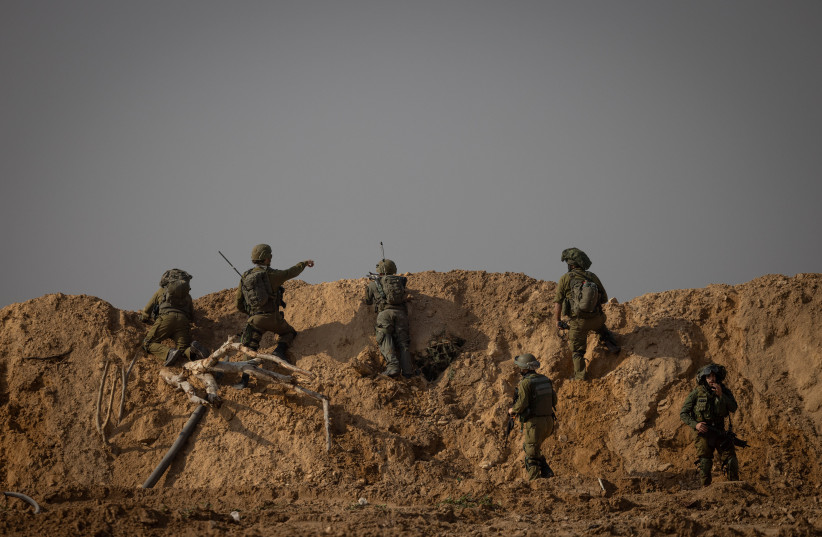
How the tragic IDF battle with high losses played out
IDF soldiers were under attack from two different directions.
The ambushing Hamas forces had video surveillance of the area and were deployed at multiple high points in multiple structures.
An initial force of four IDF soldiers was completely cut off and lost communications with general IDF forces.
Realizing this, several IDF commanders, including Lt. Col. Tomer Grinberg, commander of the 13th Battalion Golani Brigade, jumped into action to try to save the four soldiers.
They did not know whether the soldiers were alive, wounded, or whether their Hamas attackers were already trying to drag them away into a tunnel as hostages or seized dead bodies for later negotiations. They did know that Hamas had a nearby tunnel that it was using as part of their defense and operations center in the area.
IDF forces approached the fighting from three different directions of the courtyard and different structures. One set of these forces came through a similar area to where the original forces had been to try to get to them faster, and were re-ambushed by another set of explosives.
Another set of IDF forces came from the opposite side to gain some surprise and outflank the Hamas forces.
Eventually, IDF forces succeeded in getting to the original four soldiers, all of whom, as it turned out, were dead. Notably, the IDF was able to secure and rescue their bodies.
In the process of attempting the rescue, three different sets of soldiers were ambushed, losing two soldiers, then two more, and yet another in different parts of the chaotic fighting.
While the entire episode lasted two to three hours, many of the IDF forces who were killed, including in the second round of the ambushes, were killed very quickly and early into the incursion.
Eventually, the IDF was also able to bring heavy firepower onto the area from Unit 188 to end the battle.
It appears that some or all of the ambushers may still have fled and escaped, but the position they were holding has been taken.
Top IDF officials said that many such positions in Shejaia have already been abandoned and the IDF is often able to easily collect weapons and intelligence from them. This ambush was more indicative of the earlier days of battle in Shejaia in early December, they noted.
Facing criticism that it should have used air strikes on the Hamas position without sending in IDF forces, the IDF said that not every structure in Gaza can be bombed and that also many specific areas give the IDF huge intelligence value, such as maps of Hamas forces, and including key Hamas terrorists who often surrender and can be interrogated.
The names of the IDF's fallen heroes:
Today, the IDF regrets to announce the deaths of the following soldiers, who fell in combat in northern Gaza:
— Israel Defense Forces (@IDF) December 13, 2023
🕯️LTC Tomer Grinberg, 35 years old, the Commander of the Golani Brigade’s 13th Battalion
🕯️MAJ Roei Meldasi, 23 years old, a company commander of the Golani Brigade’s… pic.twitter.com/U7rrtss6TR
These are the 10 officers and soldiers who fell in battle in the northern Gaza Strip last night:
11th Reserve Commando Brigade:
• Col. Yitzhak Ben Bassat, 44, from Sdeh Yaakov, commander
Golani Brigade:
• Lt.-Col. Tomer Grinberg, 35, from Almog, 13th Battalion commander
• Maj. Roei Meldasi, 23, from Afula, 13th Battalion company commander
• Maj. Moshe Avram Bar-On, 23, from Ra'anana, 51st Battalion company commander
• Capt. Liel Hayo, 22, from Shoham, 51st Battalion platoon commander
• Sgt. Achia Daskal, 19, from Haifa, 51st Battalion
• Sgt. Eran Aloni, 19, from Ofakim, 51st Battalion
Special Rescue Tactical Unit (669):
• Maj. Ben Shelly, 26, from Kidron, platoon commander
• Maj. Rom Hecht, 20, from Givatayim
School of Combat Engineering:
• Sgt. Oriya Yaakov, 19, from Ashkelon, Battalion 614
Continued heavy fighting in southern Gaza
The IDF issued additional updates throughout Wednesday about its progress in Gaza, including that around 100 Hamas terrorists had been killed in a single series of battles in southern Gaza.
There are increasing numbers of IDF updates about southern Gaza compared to last week, when information was only flowing about northern Gaza battles.
The IDF’s greater openness about southern Gaza battles, including more examples of defeating Hamas cells staging ambushes near mosques and schools, likely signifies substantial progress in Khan Younis and its surroundings.
Simultaneously, the IDF and the political class have gone silent about efforts to locate or eliminate Hamas’s top officials – Yahya Sinwar and Muhammad Deif.
Recently, The Jerusalem Post learned that it is possible that the IDF will finish the “main war” by taking control over most of Gaza, even if it has not yet resolved the issue of Hamas’s leadership and the remaining Israeli hostages.
Hamas maintained rocket fire on Israel’s South, including pieces of an exploded rocket hitting a supermarket in Ashdod and causing significant damage, though there were no wounded.
The number of rockets and sirens per day continues to drop, with sirens down to an average of around 30 per day from hundreds at the start of the war, then down to 100, 70, 50, and now even lower.
In the North, Hezbollah and the IDF exchanged several rounds of fire again, with Hezbollah firing rockets at Kiryat Shmona, Yiftach, and other areas.
The IDF responded with multiple rounds of artillery and air strikes.
There were no specific signs of an additional escalation between the sides as there were on some other days earlier this week.
A 30-hour operation in Jenin concluded on Wednesday with four IDF wounded, but the IDF said it had made significant, broad progress against terror infrastructure, including underground, and killed several terrorists.
Go to the full article >>After Israel’s bloodiest day since Oct. 7, thousands pay their respects to a fallen commander
Tuesday’s news has hit the country particularly hard, both due to the number of soldiers killed and the circumstances of the battle.

As rain pounded the gravestones, thousands of people crowded into Israel’s military cemetery on Mt. Herzl to pay their final respects to Lt. Col. Tomer Grinberg.
It was one of many military funerals that day. Grinberg, 35, was the commander of the Golani infantry brigade’s elite 13th battalion, which lost nine soldiers in a fierce battle Tuesday night in the Gaza City-area neighborhood of Shejaiya. Taken together with a tenth soldier killed elsewhere in Israel’s war against Hamas, it was Israel’s deadliest day of fighting since Hamas’ Oct. 7 invasion, which launched the war.
“We are all prepared to give our soul and to die for the State of Israel,” said his father Isaac, whose voice cracked as he recited the Kaddish prayer for his son. “That is Golani, that is Tomer.”
The magnitude of the loss was evident in the funeral’s location, a new section of Mt. Herzl that was opened to accommodate the graves of soldiers killed on Oct. 7 and afterward. Since Israel’s ground invasion of Gaza, 115 Israel Defense Forces soldiers have been killed. Taken together with the casualties on Oct. 7, the military has lost more than 400 troops.

Hundreds of thousands of reservists were called up after Oct. 7, and since the ground invasion began, Israeli families have listened to casualty announcements with anxiety, reading names, looking at pictures and hoping that their loved ones were not among the dead.
“It is very difficult to open the news each day because every time there is news of more soldiers who fell,” said Lior Benisty, an IDF official responsible for supporting bereaved families through the grieving process who was at Mt. Herzl.
In his 15 years of duty, he says nothing has come close to the difficulty of the current period. “It is difficult news for all of us, with each of us sharing in the sorrow of this national mourning,” he said.
News hit the country hard
Tuesday’s news has hit the country particularly hard, both due to the number of soldiers killed and the circumstances of the battle.
The battle occurred in what the IDF called its “twilight” stage of conquering Shejaiya. In Tuesday’s operation, it sought to eliminate remaining Hamas strongholds in order to establish complete control of the northern Gaza Strip, where the ground invasion began. But amid fighting in the densely-crowded “Casbah” area of the neighborhood, Golani troops were ambushed by an explosion that cut off communication and killed four soldiers. Another five soldiers fell in an ensuing rescue mission.
The ambushes also killed Col. Itzhak Ben Basat, 44, head of the Golani Brigade’s commander’s team and the highest-ranking soldier killed to date in the ground invasion.
In a post on social media, former Defense Minister Benny Gatz, a member of Israel’s war cabinet, wrote that the war is “exacting a heavy, painful and difficult price from us.”
“Every fallen soldier is a scar on all of the state of Israel, and every scar is a reminder of our soldiers’ heroism, and of our need to be worthy as a society of their sacrifice,” he wrote.
Grinberg had fought in Shejaiya in 2014, during Israel’s last ground invasion of Gaza, when 13 soldiers from his battalion were killed in a battle there. On Oct. 7, he led the battle against Hamas terrorists in Kibbutz Nir Oz, one of the border communities that was hit hard in the invasion. Golani lost 40 soldiers that day.
“We knew that it is a privilege to defend our country and it comforts me to know that you would have been complete with yourself with what you did,” said his brother Ziv, who has also been fighting in Gaza and last saw his brother when the two traveled toward the Gaza border on Oct. 7.
In recent weeks, the IDF has shifted the brunt of its force to the southern Gaza city of Khan Younis, where it believes Hamas’ leadership is based. Overall, more than 18,000 Palestinians have been killed in the war, according to the Hamas-run Gaza Health Ministry, a figure that does not distinguish between civilians and combatants. On Oct. 7, Hamas terrorists killed some 1,200 people, largely civilians.
Grinberg’s was one of several funerals around the Har Herzl grounds. Rows of graves newly dug in the last month were adorned with fresh flowers, flags of military units, scarves bearing the logos of favorite soccer teams and pictures of the fallen soldiers. At one grave, a family gathered with large balloons to celebrate the 23rd birthday of their fallen son, a newlywed.
Many of the attendees at Grinberg’s funeral wore military and Golani insignia and included several of the IDF’s top brass, including Defense Minister Yoav Gallant. A significant number of the troops whom Grinberg commanded, and who were injured during the fighting and discharged attended the ceremony.
But there were also moments during the funeral that harkened to the world beyond the war. In her eulogy, Ashira Grinberg, Tomer’s wife, read from a birthday card she and their daughter sent him while he was at the front.
“Tomer, until now and still, a part of you belongs to us — I want to speak for a moment that you will be my Tomer,” she said between sobs. Reading the card, she said, “I believe that you arrived at this moment in order to be in this cursed war, may it end as quickly as possible. Your beard looks good on you and we will celebrate when you return.”
She added, “Nothing will separate between us, even if the world stops one day.”
On social media, a video of Grinberg addressing his troops after Oct. 7 has made the rounds. In the clip, he compares their mission to the 1973 Yom Kippur War, an existential fight for Israel which broke out exactly 50 years before the current conflict.
“So it turns out you are not spoiled,” he said. “It turns out you are no less heroic than them. It turns out you are not the ‘iPhone generation.’ So well done, everyone. I’m proud of everyone here, but this is just the beginning.”
Go to the full article >>Palestinians largely support October 7 massacre, deny atrocities - poll
Only 7% of Palestinians said that they believed that Hamas committed atrocities on October 7.
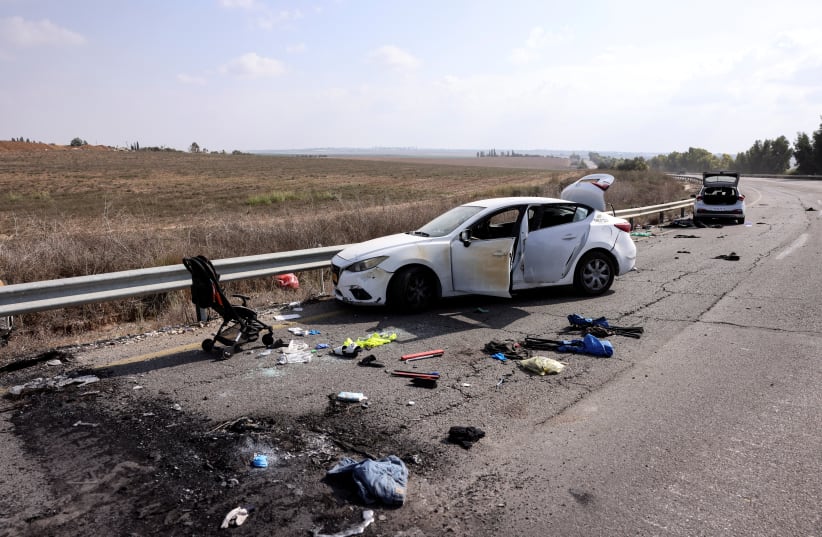
Over 70% of Palestinians in the West Bank and the Gaza Strip support Hamas' decision to carry out the October 7 Massacre and the vast majority do not believe that Hamas carried out atrocities during the massacre, according to a new poll published by the Palestinian Center for Policy and Survey Research (PCPSR) on Wednesday.
The poll found that there were "significant differences" between the attitudes of West Bank residents and Gaza residents. In the West Bank, 82% believed that Hamas' decision to launch the attack was correct and only 12% said it was incorrect, while in Gaza, 57% said it was correct and 37% said it was incorrect.
Additionally, while 85% of West Bank Palestinians expressed satisfaction with Hamas' behavior in the war, only 52% of Gazan Palestinians felt the same. In reference to specifically Hamas leader Ismail Haniyeh, 57% of West Bank residents expressed satisfaction with his role, while 43% of Gazans said the same.
Palestinians in general expressed disappointment with Fatah and the PA, with only 22% expressing satisfaction with Fatah's role in the war and only 14% expressing satisfaction with the PA's role.
Among the respondents, 85% said that they did not see videos showing the atrocities committed by Hamas against Israeli civilians on October 7. Only 7% of respondents said that they believed that Hamas committed such atrocities.
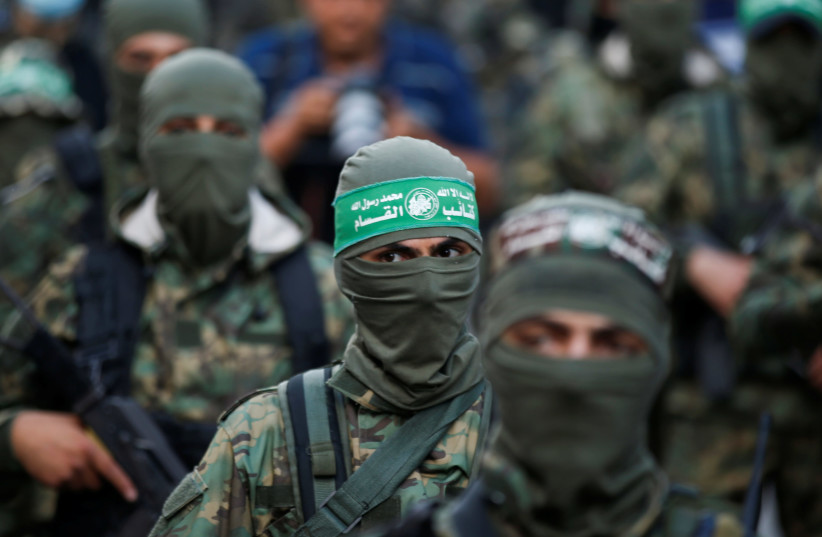
The poll found that 95% of Palestinians believe Israel has committed war crimes during the war, while only 10% said that they believe Hamas has committed such crimes.
The majority of the respondents said as well that they believe that the massacre was conducted as "a response to settler attacks on al-Aqsa Mosque and on Palestinian citizens and for the release of prisoners from Israeli prisons," while only 14% thought it was an Iranian plot to thwart Arab normalization with Israel.
While 70% of West Bank residents believe Hamas will win the war, only half of Gazans believe the same. A third of Gazans believe that Israel will emerge victorious.
Who should rule Gaza after the war?
When asked about who would be likely to rule Gaza after the war, nearly two thirds (73% in the West Bank and 51% in Gaza) said that Hamas would still be in power, while 11% said a PA national unity government would rule but without PA President Mahmoud Abbas. Additionally, 7% said that the PA under Abbas would rule Gaza, 4% said Israel would rule, 3% said one or more Arab countries would control the Strip, 2% said a unity government under Abbas would rule, and 1% said the UN would be in charge.
When asked who they would prefer to see controlling Gaza after the war, 75% of West Bank residents said Hamas, while only 38% of Hamas residents said the same. 16% of the respondents said a PA national unity government without Abbas should rule, 7% said the PA under Abbas should rule, 3% said one or more Arab countries should control the Strip, another 3% said a unity government under Abbas should rule, and 2% said the IDF should be in charge.
Some 72% of respondents said that they think Hamas will succeed in returning to rule Gaza after the war, while 23% said they do not believe Hamas will manage to do so.
Additionally, if the West Bank and Gaza are unified under the PA after the war, 70% of respondents said they would be opposed to the deployment of an Arab security contingent in the area, although support for such a contingent would rise to 45% if it provided basic, administrative, and health services.
About half of West Bank residents and Gazans said that they expect a ceasefire in Gaza within the next few weeks, while a quarter said that they expect the war to continue for weeks or months. Some 28% of West Bank respondents and 9% of Gazan respondents said that they expect Israel to "unilaterally end the war and begin to withdraw under the pressure" from Hamas.
Palestinian respondents expressed widespread satisfaction with Yemen's role in the war, with 89% of West Bank residents and 68% of Gazans expressing satisfaction with Yemen's role. In comparison, 56% of Palestinians expressed satisfaction with Qatar's role, 49% expressed satisfaction with Hezbollah's role, 35% were satisfied with Iran's role, 34% with Turkey's role, 24% with Jordan's role, and 23% with Egypt's role.
The United Arab Emirates and Saudi Arabia sat at the bottom of the list, with only 8% of Palestinians expressing satisfaction with the UAE's role and only 5% expressing satisfaction with Saudi Arabia's role.
Palestinians split on what Israel's goal in war is
When asked about what they thought Israel's goals in the war were, 53% said that they believed Israel intends to destroy Gaza and kill or expel its population while 42% said that they think the goal is to exact revenge against Hamas and destroy the terrorist factions in the Strip.
The vast majority of respondents also said that they believe Israel will fail in eradicating Hamas, with only 8% thinking that Israel will succeed, although West Bank residents are more sure of this failing than Gaza residents (87% compared to 44%).
Of the respondents, 71% said that they believe Gazans who were displaced by the war will be able to return to their homes after the war, although West Bank respondents were much more optimistic about this than Gazans. (83% compared to 53%)
A majority of the respondents (52%) blamed Israel for the suffering of Gazans in the war, while 26% blamed the US, 11% blamed Hamas, and 9% blamed the Palestinian Authority.
Gazan face difficulties accessing necessities
Gazan respondents were also asked about humanitarian conditions in the Strip, with 44% saying that they have enough food and water for a day or two and 56% saying that they do not.
Only one third of Gazan respondents said that they can reach a place where they can access food or water.
Two thirds of Gazan respondents said that they had a family member who had been killed or injured in the war. Some 36% said that none of their family members have been killed or injured.
Most of the Palestinians polled (85%) said that they supported the release of Israeli women and children held hostage by Hamas in exchange for Palestinian prisoners.
The PCPSR interviewed 1,231 adults in the West Bank and Gaza Strip for the poll.
Go to the full article >>Israel close to 'diplomatic solution' to move Hezbollah away from border - report
KAN reported that Minister Benny Gantz held conversations on the subject with the foreign ministers of the United Kingdom and France.

Israel is close to reaching a "diplomatic solution" to move terror organization Hezbollah away from the northern border with Lebanon, KAN News reported Wednesday morning.
Along with Israel's main goal of moving Hezbollah forces north of the Litani River and away from Israeli civilians, discussions with European partners included the potential strengthening of the United Nations Interim Forces in Lebanon (UNIFIL), situated in the country's south.
KAN further reported that Minister Benny Gantz held conversations on the subject with the foreign ministers of the United Kingdom and France.
Hezbollah warns of 'new escalation' on Israel's northern front
On Sunday, a Hezbollah MP warned that Israeli airstrikes that caused widespread damage in the town of Aitaroun near the Israeli-Lebanese border on Sunday were a "new escalation," adding that the terrorist group would continue its attacks on Israel.
Lebanese media portrayed the IDF's response to Hezbollah attacks on Sunday as a significant escalation compared to other clashes along the border in recent weeks.
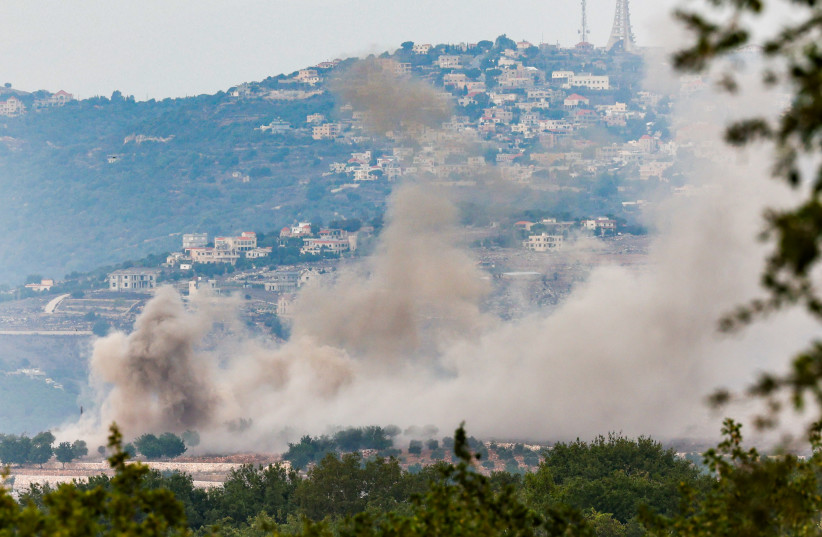
Last week, Defense Minister Yoav Gallant told the leaders of communities near the northern border that Israel was attempting to reach a diplomatic solution in which Hezbollah would retreat to the Litani River, but was also prepared to remove the terrorist group through military means from the area near the border.
On Sunday, KAN news reported that Israel was preparing to set a deadline for a diplomatic solution and that Israeli officials believe the chances of such a solution are low.
Tzvi Joffre contributed to this report.
Go to the full article >>Israel-Hamas War: What you need to know
- Hamas launched a massive attack on October 7, with thousands of terrorists infiltrating from the Gaza border and taking some 240 hostages into Gaza
- Over 1,200 Israelis and foreign nationals were murdered, including over 350 in the Re'im music festival and hundreds of Israeli civilians across Gaza border communities